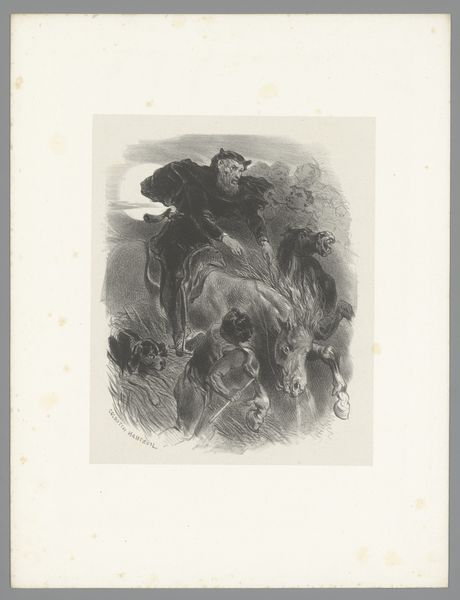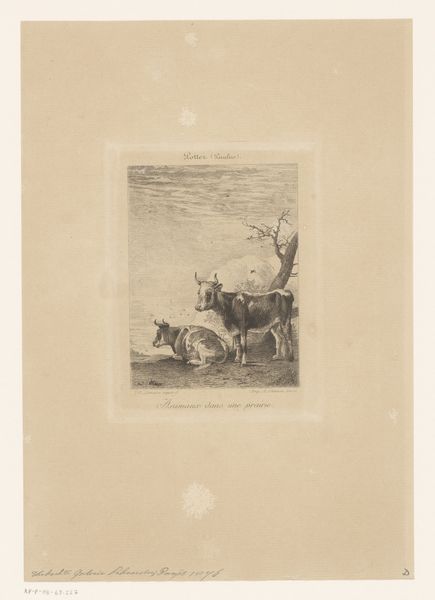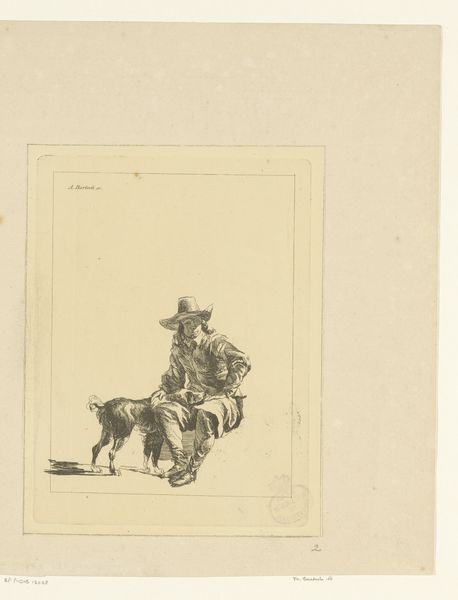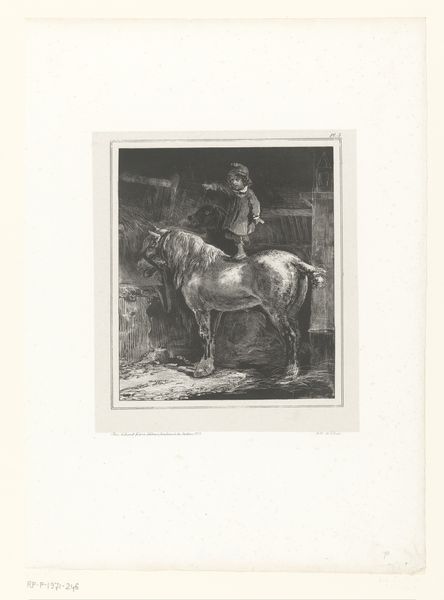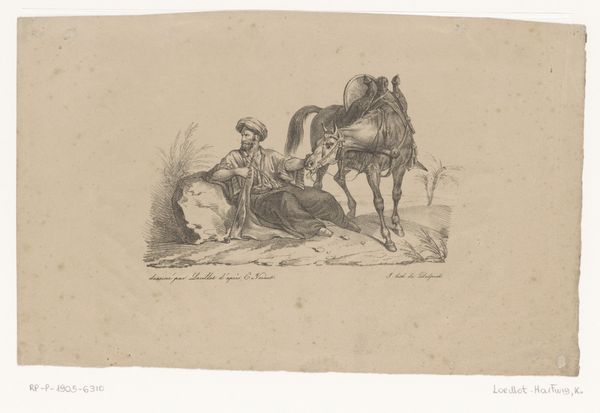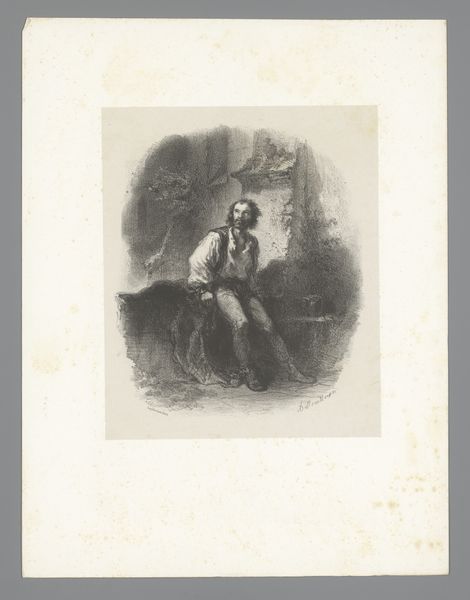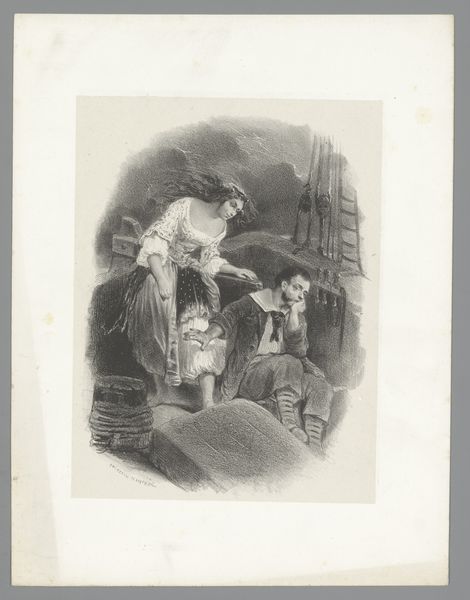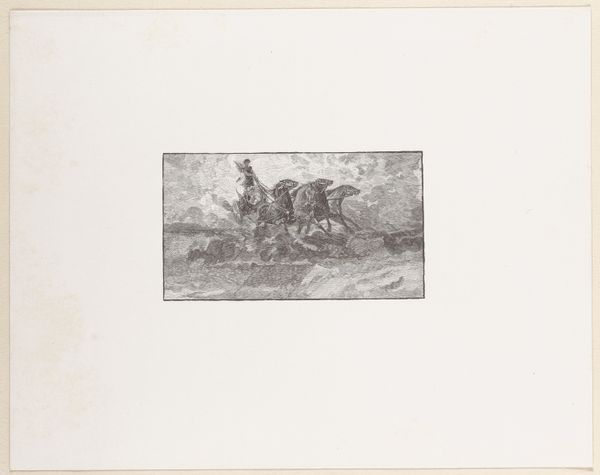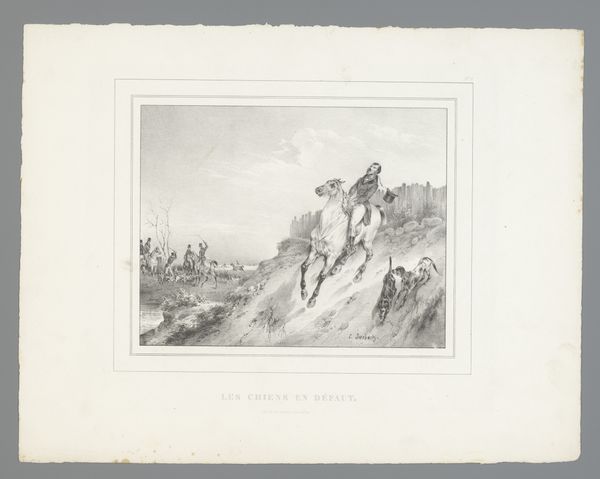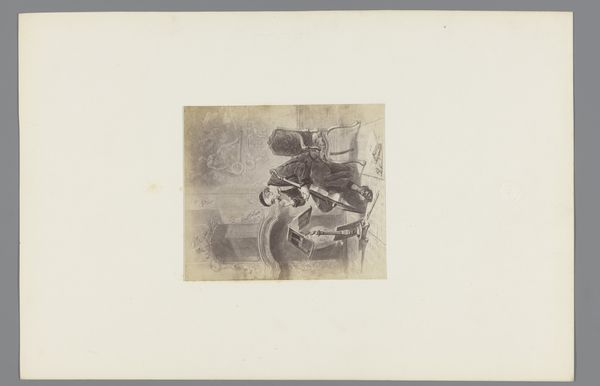
drawing, pencil
#
portrait
#
pencil drawn
#
drawing
#
landscape
#
pencil
#
horse
#
sketchbook drawing
#
academic-art
#
realism
Dimensions: height 357 mm, width 277 mm
Copyright: Rijks Museum: Open Domain
This print, depicting a man in uniform on horseback, was made by Célestin Nanteuil using lithography, a printmaking technique that rose to prominence in the 19th century. The lithographic process begins with a flat stone or metal plate. The artist draws an image onto the surface using a greasy crayon or ink. The stone is then treated so that the image area attracts ink, while the non-image areas repel it. When printed, the image transfers to paper. The soft, velvety blacks and subtle tonal variations of this print are characteristic of lithography, and suited to a romantic composition. Consider the social context of this image, and the labor involved in its production: the artist's creative work, the skilled labor of the printer, and the materials extracted to make paper and ink. The lithography, as a form of mechanical reproduction, made images more accessible to a wider audience, reflecting the changing social and economic landscape of the time. Thinking about the materials and methods of production invites us to consider the broader historical and cultural implications of this artwork, challenging conventional distinctions between fine art and craft.
Comments
No comments
Be the first to comment and join the conversation on the ultimate creative platform.
